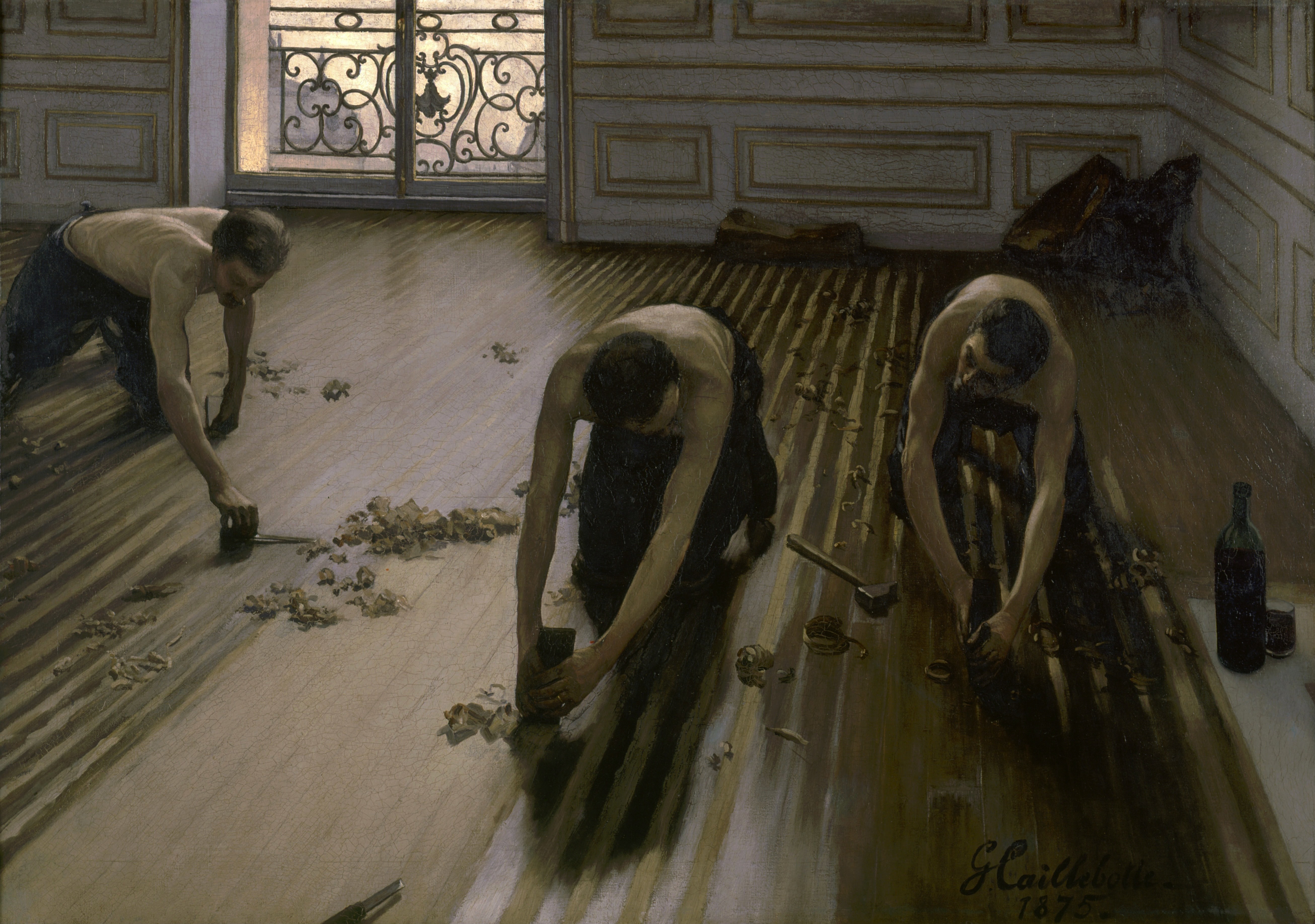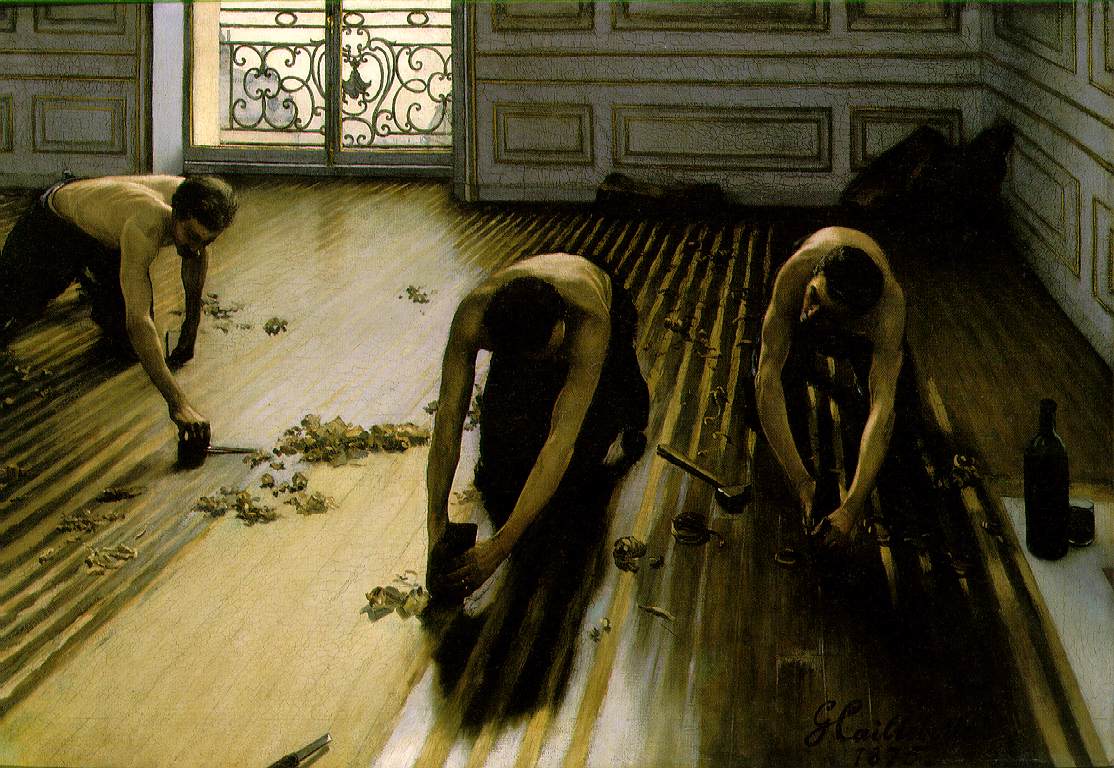Little did I know about Gustave Caillebotte and his art when I was introduced to a very moving painting called “The Floorscrapers” of 1875. I feel in love at first sight. I love the depth and the passion applied in each and every single execution done on the canvas. Personally, art normally just rings a bell someway, somehow deep inside of the “art-deposit” in the brain. The reason behind the trigger being released is the time the painting was made in. According to the time, and location being it is a distinguished unconventional composition with unusual angles and scene-cuts. Three floor scrapers are recorded in the painting, and the various stripes’ depth and color creates rhythm and dynamics in the painting. There is created light through the window reflections, and those reflections creates the balance that sharpens the focus to the workers. The painting implies a new time for the worker; the implication of namely being the labor in the free market.
In contrast to the bourgeoisie, the floor-scrapers had united workforces meaning a mutual dependence, so the painting brought the golden section of the modern labor maintaining a connection between work and morality, which in the bourgeoisie’s view is two separate classes. Basically, it is social awareness for the upper class supposedly uninformed, and in the meantime, it is protest to social gabs.
After doing some research online, especially on www.gustavecaillebotte.org, I found the thread that interconnected his paintings. I gave particular attention to the historical content of the image, and in what relations it was made.
First, I found a study of Callibotte’s painting, but I must notify you that nowhere online did I find clear implications that Callibotte was responsible for drawing this study. Other than that, it is made clear that it is a charcoal drawing. Some sources claimed that it is an actual piece of Callibotte, but like mentioned earlier, I am not very familiar with his collections, so I will not present false statements, but supposedly it was done in 1875 by Callibotte, himself.
Second, I would like to share the actual piece once again, and here I would like to add that one should try to pay special attention to the light coming into the room. It does a perfect job in harmonizing and it puts a set mood of the working class’ struggle.
Third and last, I will relate the sketch study recently presented with the done work of the study. Again, we see a similar pattern, but this time it is done with more nuances. The scar of the sunlight reflects perfectly over the polished wood floor, and the worker closest to the window. Furthermore, I feel like Callibotte is using a personal appeal in the painting. One worker seems to be relatively younger and smaller in size than the other worker. One can imply that it is a father working with his son. It magnifies the social issue of child labor not to mention class separation.

2%20%201875.jpg)


No comments:
Post a Comment